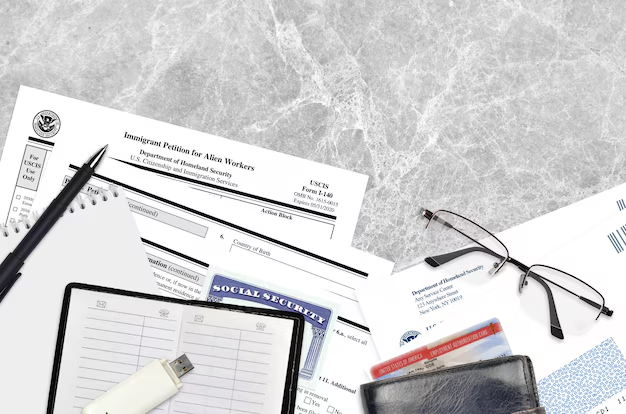Navigating Tax Paperwork: How to Obtain an IRS Transcript
Understanding how to obtain an IRS transcript can be a crucial tool for managing your financial life, whether you're applying for a loan, preparing for an audit, or simply keeping accurate financial records. While the process may initially seem daunting, this guide aims to break down the steps and provide clear, actionable insights for accessing these vital documents.
What is an IRS Transcript and Why Do You Need One?
An IRS transcript is essentially a record of your tax return information. It is a summary of the income, deductions, and credits reported to the IRS for a specific financial year. There are several types of transcripts, each serving distinct purposes:
- Tax Return Transcript: A detailed summary of your original tax return as filed.
- Tax Account Transcript: Shows basic data, including the type of return filed, marital status, adjusted gross income, and taxable income.
- Record of Account Transcript: Combines information from both the tax return and tax account transcripts.
- Wage and Income Transcript: Details of income reported to the IRS by employers, banks, and other entities.
- Verification of Non-Filing: Proof that you did not file a return for a specific year.
These documents can be essential for:
- Loan applications: Lenders require verification of income.
- Verification purposes: When needed for school applications or FAFSA.
- Rectifying tax discrepancies: Helping identify mismatched figures in tax liabilities.
How to Request an IRS Transcript
The steps to obtaining an IRS transcript are more accessible than you might think. Here’s how you can get started:
📌 Online via the IRS Website
The quickest and simplest way to obtain your IRS transcript is online through the IRS’s "Get Transcript" tool.
- Visit the IRS website: Navigate to the official IRS website and select the "Get Transcript" option.
- Set up an account: If you don’t already have an IRS account, you'll need to create one using your personal information.
- Verify your identity: Have sensitive information—such as your Social Security number, date of birth, filing status, and address from your latest tax return—ready.
- Select your transcript type: Choose the type of transcript you need and download it directly to your device.
📌 Telephone Request
If you prefer not to use the internet, the IRS allows transcript requests by phone:
- Call the IRS: Dial the IRS Transcript request line at 1-800-908-9946.
- Provide necessary information: Be prepared with your Social Security number, date of birth, and mailing address.
- Follow automated instructions: The system will guide you through the process of ordering your transcript.
📌 By Mail
For those who prefer not to deal with phone or internet, transcripts can also be requested by mail:
- Fill out the IRS Form 4506-T: This form allows you to request a tax return transcript or another type of transcript.
- Mail the form to the address specified: The address will differ based on where you lived when you filed the return.
Potential Challenges and How to Overcome Them
While obtaining a transcript is generally straightforward, you might encounter some bumps along the way. Let’s address potential challenges and how to efficiently tackle them:
- Identity Verification Issues: If you're unable to answer security questions correctly when accessing the IRS website, ensure all your data matches the latest filed return.
- Long Processing Times for Mail Requests: If time is of the essence, opting for online or phone requests can expedite the process.
- Old Information: Sometimes, information might not be updated immediately. Verification might show past years until newer data is processed.
Frequently Asked Questions About IRS Transcripts
How Long Does it Take to Receive an IRS Transcript?
- Online Requests: Typically immediate availability for download.
- Phone Requests: Typically mailed within five to ten business days.
- Mail Requests: May take up to 30 days depending on the volume.
Is There a Fee to Access My IRS Transcript?
No, obtaining your IRS transcript is free of charge, regardless of the method used for the request.
Can Someone Else Access My Transcript?
You can authorize a third party (like a CPA or tax professional) to access your transcripts by filling out and submitting IRS Form 2848 (Power of Attorney) or Form 8821 (Tax Information Authorization).
What if My Transcript Information is Incorrect?
In case of discrepancies in your transcript, it’s advisable to directly contact the IRS for further guidance on corrections.
Summary of Key Takeaways 📝
- Request Methods: Choose between online, phone, or mail requests based on preference and urgency.
- Types of Transcripts: Choose the specific type needed—Return, Account, Wage & Income, etc.
- Verification: Ensure all personal information matches the latest returns for smooth processing.
- Free of Charge: Access to transcripts is entirely free.
These steps provide a clear roadmap for anyone needing access to their IRS documents effortlessly and effectively.
Navigating tax paperwork doesn’t have to be a bewildering experience. Whether for auditing, personal record-keeping, or financial applications, understanding the how and why of obtaining IRS transcripts can save time and prevent headaches. Use these insights confidently to ensure you have the necessary documentation in hand whenever you need it.

Related Topics
- Are Irs Economic
- Are Irs Economic Impact Payments Still Available
- Are We Getting Ctc Payments In 2024 Irs
- Can Form 8822 Be Faxed To Irs
- Can I Brown Act Irs
- Can I Call The Irs
- Can I Edit Any Irs Payment After I Did It
- Can I Go To Irs For Support
- Can I Have The Irs Apply My Overpayment If Divorced
- Can I Make Payments To The Irs